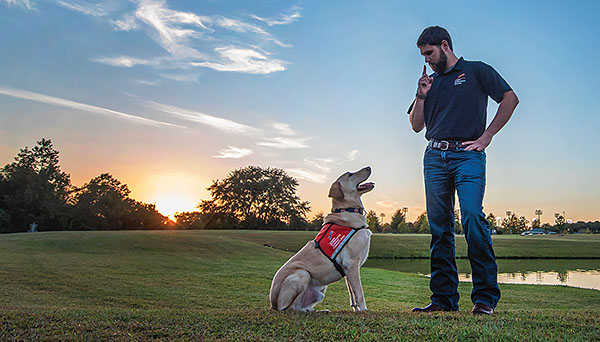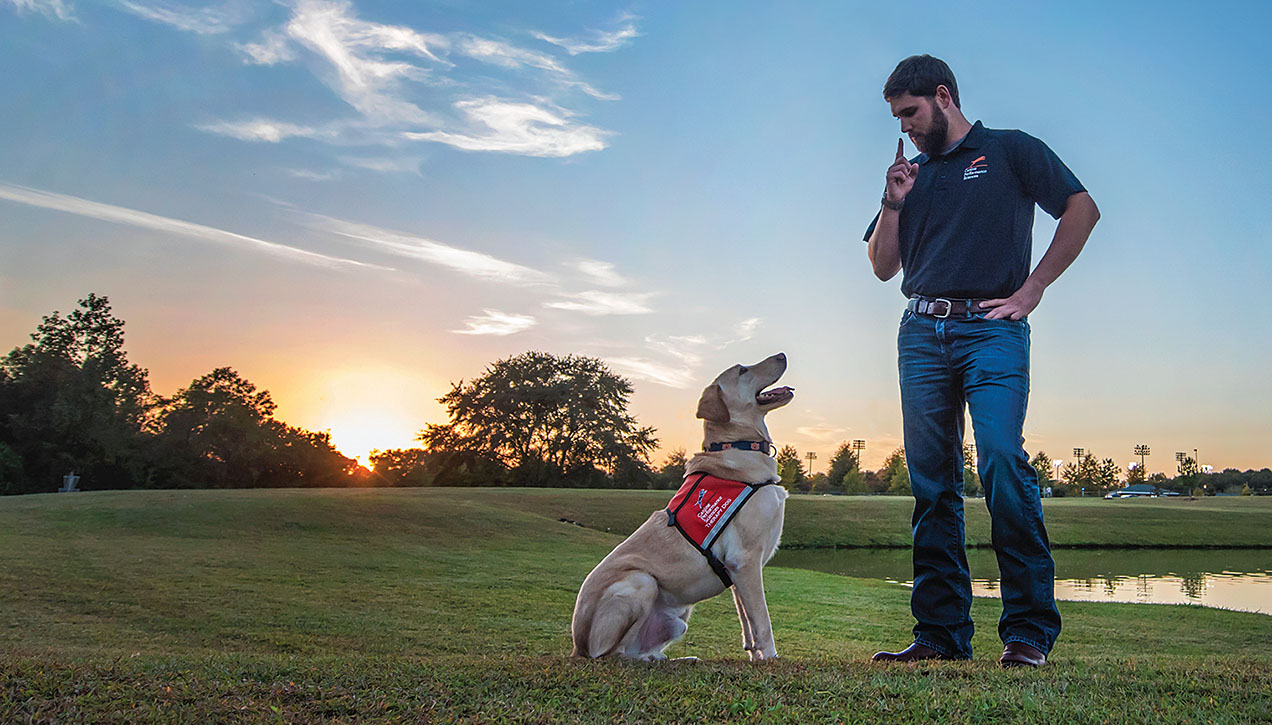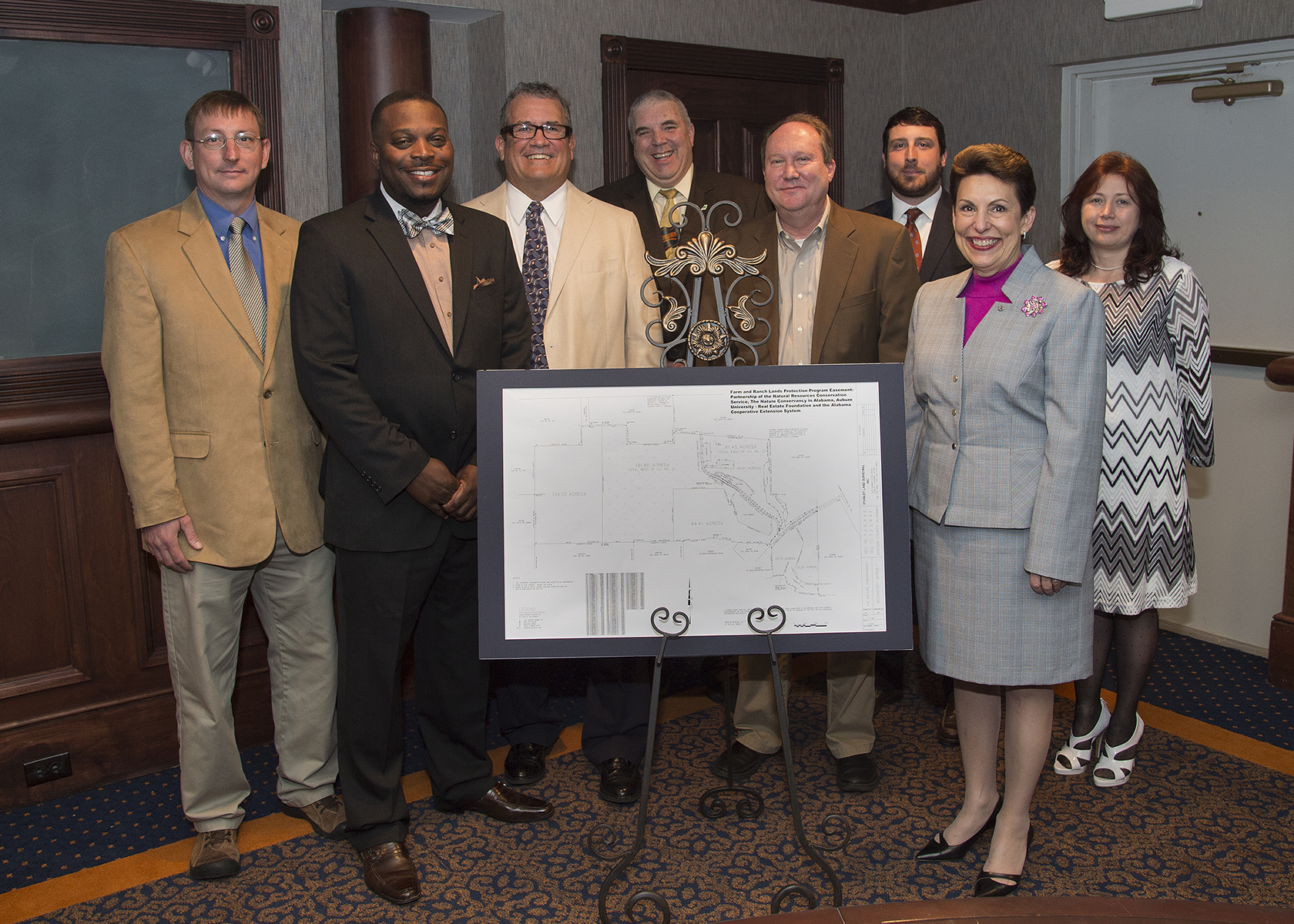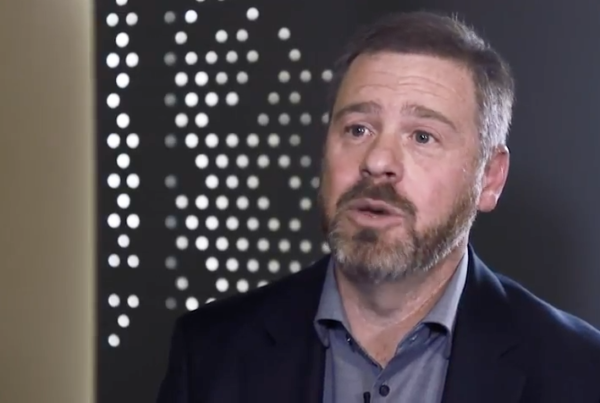
Photo by Jeff Etheridge
Stories about heroic dogs saving human lives have been told for thousands of years, but danger is not always as obvious as a masked villain or a wandering bear. Sometimes, it comes in the form of an illness. Dogs at Auburn University are being trained to save human, animal, and plant lives by aiding in the early detection of diseases.
“We are really excited about our research in biological detection because it may one day help protect humans and our food supply from natural disease outbreak,” said Dr. Craig Angle, co-director of the Canine Performance Sciences (CPS) program, which is part of the College of Veterinary Medicine at Auburn University. “Dogs are natural bio sensors and come pre-programmed with 30,000 years of bio sensing evolution.”
People may be familiar with the use of dogs in law enforcement, sniffing for drugs, bombs, or chemicals. In fact, for the past 25 years, Auburn’s CPS program has been at the forefront of developing and training the nation’s ultimate detection dogs. This includes their patented Vapor Wake® technology, which grew out of their research. Auburn dogs are sensitive enough to detect one part per trillion, which is the equivalent of one blade of grass in 7,000 Jordan-Hare Stadiums. Dogs also only need 0.2 seconds to sniff a biological sample and determine if it is the target sample or not. Dogs truly are the most powerful chemical sensing technology on earth, and the CPS is trying to unlock and enhance the canine’s bio sensing capabilities.
Since the late 1980s, various medical studies have investigated cases of dogs detecting cancer cells in people. According to Angle’s research, dogs can smell thyroid cancer in a few small drops of urine and can distinguish between a variety of different viruses. Angle, with co-director Dr. Paul Waggoner, helped develop the research technology used by the CPS program.
“This is significant because it is showing us that diseases and pathogens have unique odors, and that dogs have a capability beyond machines to detect and interpret that odor in real time,” said Angle. He believes the research will help develop real-time disease detecting machines. In the meantime, he is optimistic about the possibility of dogs helping scientists bridge the gap between detection and diagnoses of diseases and pathogens that are currently undetectable in state-of-the-art machinery.
“With further funding and research,” said Angle, “we see dogs as a real-time, mobile, biological detection technology that could be employed by the agriculture and medical industries to detect diseases and pathogens in plants, livestock, and humans.”
Previous donations to the CPS program helped researchers discover canine abilities to detect and discern viral infections in animals. Much more research needs to be conducted to look at the dogs’ ability to detect pathogens and diseases in hospitals and underserved populations.
“We are a soft money program, which means that salary and operations expenses must be covered through contracts, grants, and private donations,” Angle said. Donations allow the program to buy new equipment, support detection dogs on research projects, and improve the canine training operations, all of which allows the CPS to push the envelope of canine detection.
Please donate to support the Canine Performance Sciences program today.






